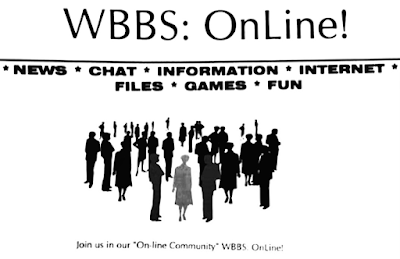© Mark Ollig
My mother once told me, “Mark, as you get older, time goes by faster.”
She was right.
As we conclude 2023, let’s revisit some articles published this year.
“100-Year-Old Predictions” – Jan. 6.
On Jan. 1, 1923, the Minnesota Daily Star printed an article predicting military advancements for 2023, including vertical takeoff aircraft and encrypted radio communication.
Major General Edward F. McGlachlin envisioned using submersibles and “flying tanks” by 2023.
“The Theatrophone Visits the US” – Jan. 20.
In May 1898, the New York Telephone Company introduced a theatrophone system with five New York City theaters wired to a switchboard.
This allowed people attending the New York City Electrical Show at Madison Square Garden to enjoy stereophonic musical performances over telephones.
In 1881, Clément Ader pioneered this technology for the theatrophone system in Paris, France, transmitting live entertainment through telephone lines.
The theatrophone was eventually replaced due to the increasing popularity of radio broadcasting.
“An Interview with ChatGPT” – Feb. 3.
ChatGPT, powered by GPT (Generative Pre-trained Transformer), is an interactive artificial intelligence language model and a form of natural language processing (NLP) software designed to facilitate human-like conversations.
During my online interview with ChatGPT, we discussed its interactions with humans and how it processes requests for information.
I noted individuals should independently fact-check and ensure the accuracy of information obtained from ChatGPT or any AI model.
“Launch of the first 3D-printed rocket” – March 31.
Relativity Space launched Terran 1, the world’s first 3D-printed rocket.
Around 85% of its components consisted of metal alloys, and it was made using the world’s largest 3D metal printer, Stargate.
Unfortunately, it crashed into the Atlantic Ocean due to engine failure.
“Washington–Moscow Direct Communications Link” – April 21.
Established in 1963, the “red telephone” or “hotline” was a secure and direct communication link between the United States and the Soviet Union for quickly resolving misunderstandings or unintentional military escalations.
The hotline contributed significantly to global security and stability during the Cold War era.
“Minnesotan ‘fueled’ Mercury, Gemini, and Apollo” – May 5.
Robert Rowe Gilruth, born Oct. 8, 1913, in Nashwauk was a prominent figure in NASA’s space exploration efforts.
He was integral to the United States’ early human spaceflight programs and oversaw the Apollo 11 mission.
“Pocket radio memories” – June 23.
In the 1960s, I bought a Channel Master six-transistor pocket-sized AM radio.
Writing this column brought back many nostalgic memories, reminding me of one of my earliest experiences with electronic technology.
“The Brownie camera” – July 28.
Joseph Nicéphore Niépce took the first photograph in 1826.
George Eastman transformed photography with the Kodak box camera, making it accessible to the general public sixty-two years later.
The Brownie, a photographic camera invented by Frank A. Brownell in 1900, was widely popular and easy-to-operate. Over two million were sold by 1915.
“Pony up to the Hemingray No. 9 insulator” – Aug. 25.
In the early days of outdoor telephone line networks, glass insulators such as the Hemingray No. 9 prevented short circuits and corrosion of the bare metallic wires attached to wooden brackets on telephone poles.
The bulbous glass dome on the insulator resembles a pony’s head.
“The heart of the community” – Sept. 1.
In the early 1900s, small-town telephone switchboards were the primary communication center for communities.
They played a crucial role in developing modern telecommunication networks and were considered the “heart of the community.”
“Antonio Meucci: inventor of the first telephone?” – Sept. 29.
Antonio Meucci’s patent caveat for the telephone expired in 1874, while Alexander Graham Bell was granted a telephone patent in 1876.
Legal battles between Meucci and Bell were resolved in favor of Bell’s patent in 1885.
A 2002 US House Resolution 269 recognized Meucci’s contributions to telephone development.
“Solar system’ time capsule’ brought to Earth” – Oct. 6.
NASA’s OSIRIS-REx spacecraft completed its mission, returning to Earth material from asteroid Bennu, considered a “time capsule” from the solar system’s early days, offering insights into the formation of our planetary system.
The mission also contributed to planetary defense by providing data to assess the asteroid’s orbit and trajectory.
“The original online frontier” – Nov. 24.
The Bulletin Board System (BBS) was created in 1978 by Ward Christensen and Randy Suess as a telephone line dial-up platform for sharing software files and messaging.
The number of BBSes reached around 60,000 in the US by 1994, but declined in the early 2000s as people shifted to commercial internet services and the World Wide Web.
BBSes played an essential role in shaping today’s interconnected world.
“The National Defense Test” – Dec. 8.
On the evening of Thursday, Sept. 12, 1924, the radio broadcast of the National Defense Test took place in Washington, DC, showcasing the effectiveness of radio communications in reaching many people during emergencies.
The radio stations receiving the broadcast were interconnected through the US telephone network.
“The Santa Helper Hotline” – Dec. 22.
In 1955, the “Call Santa” newspaper ad had a misprinted phone number.
Children who dialed the number reached the red hotline phone of the Continental Air Defense Command (CONAD).
North American Aerospace Defense Command (NORAD) continues the tradition started in 1955 by Colonel Harry W. Shoup at CONAD, who decided to provide radar updates on Santa’s journey to children calling in on Christmas Eve.
Happy New Year, everyone.














